Life With Chronic Illness
“Imagine you lose the ability to run, to walk, then you can’t stand for longer than ten minutes without passing out. You feel like your brain is constantly trying to come out of your eyes, and you can’t eat without severe pain. Your body has found a new level of fatigue that leaves you bedridden most days. Imagine this happens within a year, and you are only 16 years old.
For me, this isn’t something that I have to imagine because it is where my journey with chronic illness and disability starts. This is a story of finding my worth and the dog that helped me do it.
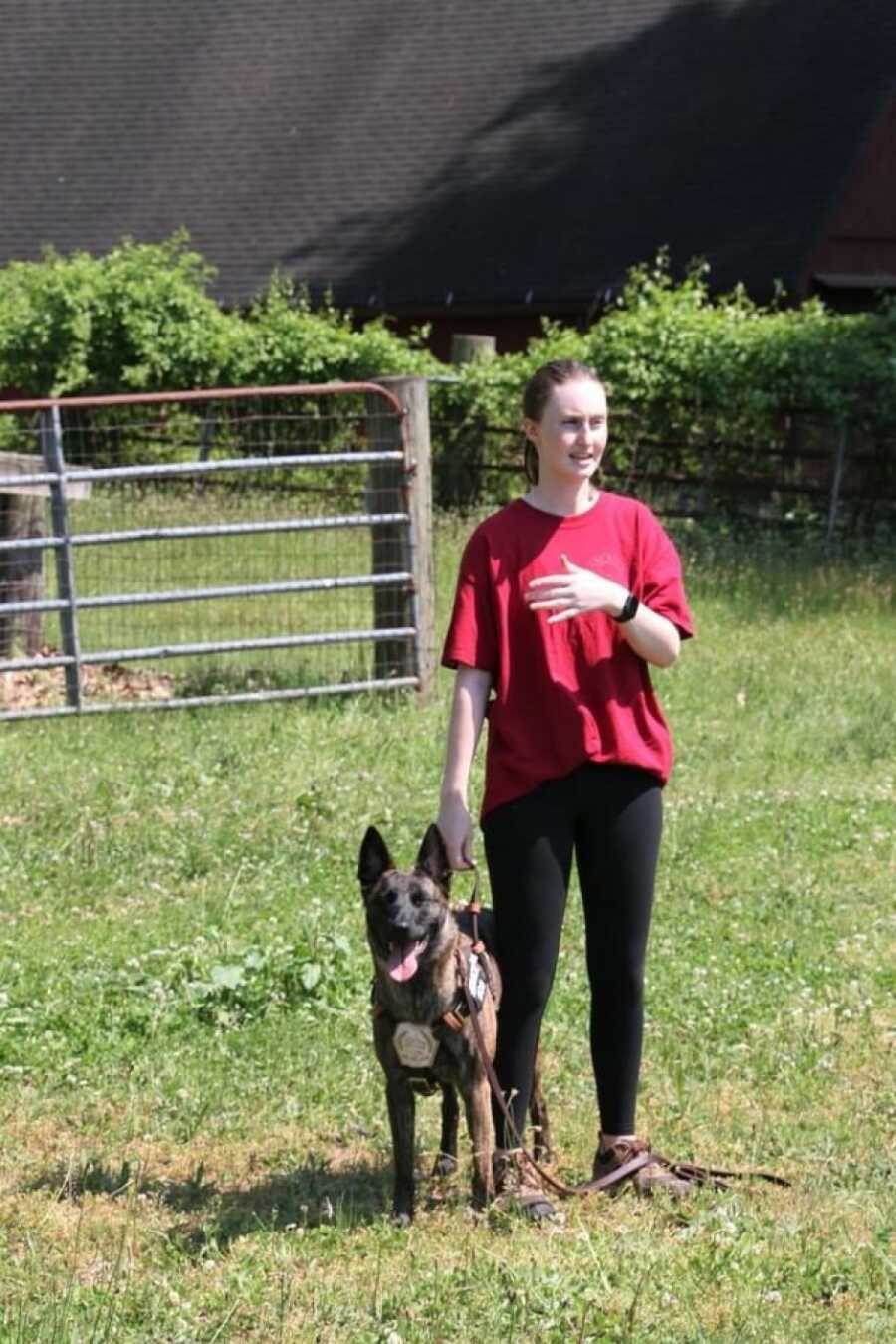
After two years of trying to find out what was wrong with me, at 16 I was diagnosed with Postural Orthostatic Tachycardia Syndrome (POTS), which is a form of dysautonomia. This means that my autonomic nervous system does not function as it should. This controls everything in the body that you don’t have to think about: blood pressure, pupil dilation, sweating, breathing, heart rate, digestion, etc.
By the time I was diagnosed I had to give up soccer, a sport I had played since first grade, and stop taking the violin lessons I had been in since I was 3. My grades had dropped, and even reading had become too difficult. Most days I could not get out of bed. The life I thought I was meant to have was being ripped away piece by piece and all I could do was watch it leave.
I would go on to have multiple medical episodes a day for years. They could be as simple as blacking out when I stand up to passing out in the middle of Costco. I got used to walking around dizzy and losing my hearing if I stood for too long. Even lying down, if I held my hands above my heart, they would go numb. The only way I was able to manage a shower was to sit on the floor and shower in cold water until my hands turned blue when I washed my hair.
All of these symptoms and more I dealt with alone. No one could do anything to help me, so I didn’t want to bother anyone. I was managing pretty well, but looking back I don’t know how I did it.
Over the next years, I fought hard against POTS to gain back the life I had before. To gain back my independence. I constantly overworked myself and ended up enrolling in a physical college. I was told that if I just worked hard enough then I would be better. That I would have more energy. I was told this by my doctors. None of it helped.
I wasn’t able to keep up a steady workout routine because I was over-exerting myself every time, and I ended up having to medically withdraw from college after two and a half years. At 21, I hadn’t made any progress with my POTS and my life seemed to be going nowhere.
Service Dog Program
That’s when I submitted my application and was accepted into a service dog program. I had done a year of research prior, but only when I had to medically withdraw from college did I finally think I was ‘sick enough’ to be able to need one. The program had a four to six year wait for a dog, but I was prepared for that and started making plans for what my life would look like with this dog.
It would alert me to my medical episodes, help with mobility, and be a visible sign to others that I was disabled. Every six months for the next two years I submitted the necessary paperwork telling the program that I still wanted a dog and how my needs had changed. This prospective dog was going to change my life.
Then, in February of 2020, my health crashes again and I am forced to move halfway across the country, back home. Home looks a little different after four years away, and one of the biggest changes is my mom had decided to puppy raise a dog, Louise, to be a service dog for a veteran. I figured with all the research I had done into service dogs in general, I would be able to help start her training.
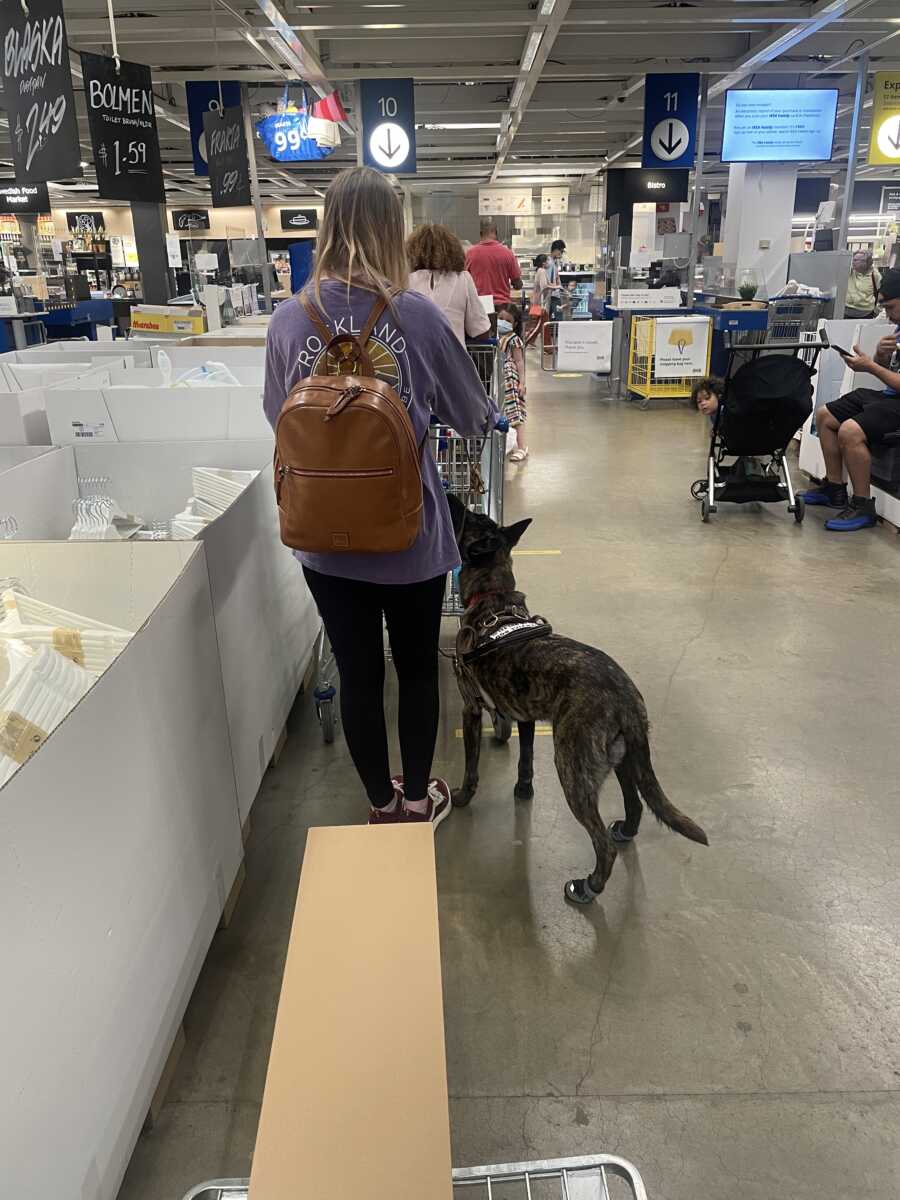
I threw every ounce of energy I had into Louise and slowly as her knowledge grew, so did my stamina. I wanted to get out and expose her to new things and this meant I had to be healthy enough to do it. I started learning how to take advantage of the little energy I did have.
I learned what foods caused less pain when eating, I gained the confidence to sit down in public when I was going to pass out, and I made a great connection with a trainer that my mom had been working with for the past few years with our other dogs. If Louise had helped this little bit, I couldn’t wait to see how much my own service dog would help me. I still had two more years on the waitlist.
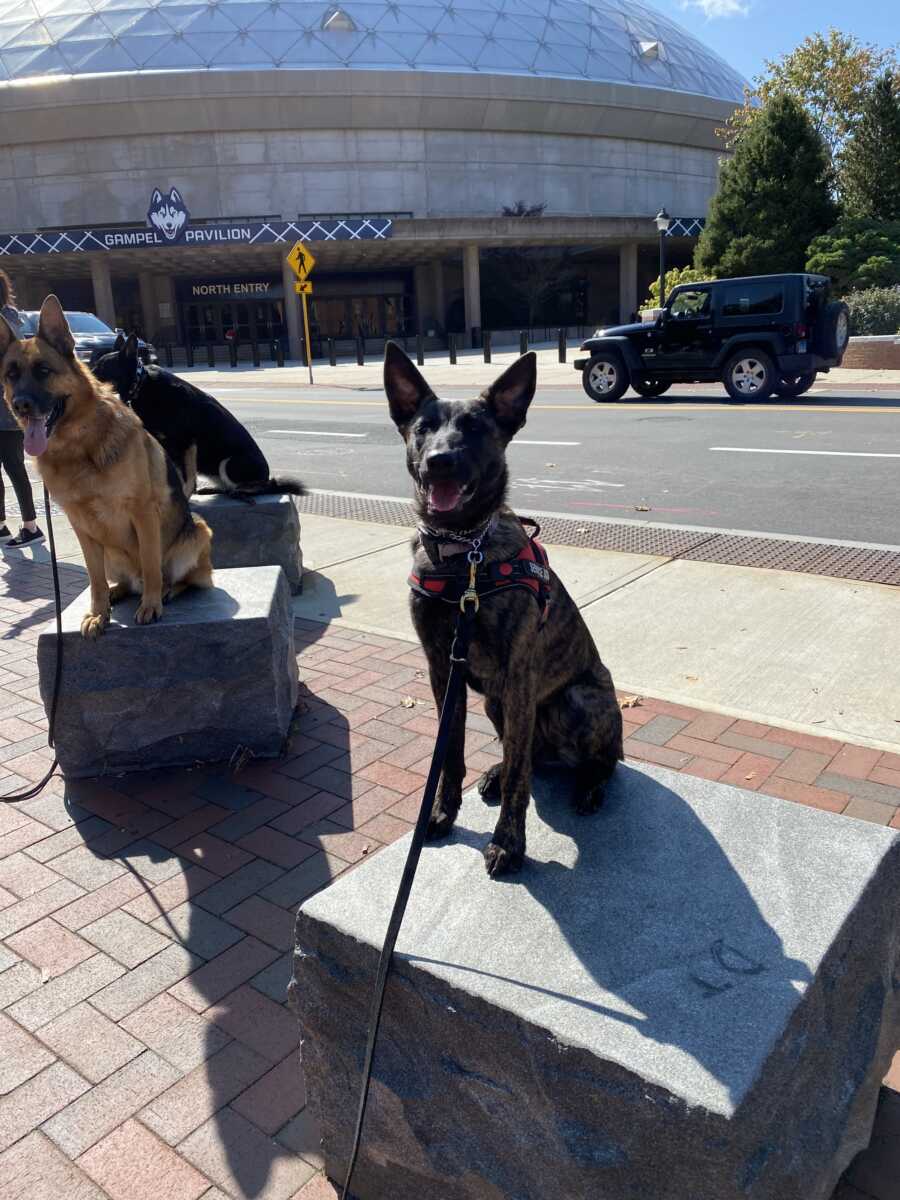
Getting a Service Dog
After a few months, it became clear that Louise wasn’t meant to be a service dog and we adopted her. I continued her training to be a good pet, and we kept going to group classes with this trainer. By this point, I had become good friends with the trainers there and my mom and I were sad to see that their newest litter of Dutch Shepherd puppies were all spoken for. That was until we went to group class one Saturday and they had the puppies out and, to our surprise, there was one available.
We talked with the trainer and he thought it would be a good fit for me as a pet, so I put Louise in the car after group class and sat with the puppy for a while. We met the mom, Luna, who was so social and confident. That day we put a deposit down on the puppy and two weeks later, when she was 8 weeks old, I brought home Violet. I had no idea the potential that was contained in this little ball of energy.
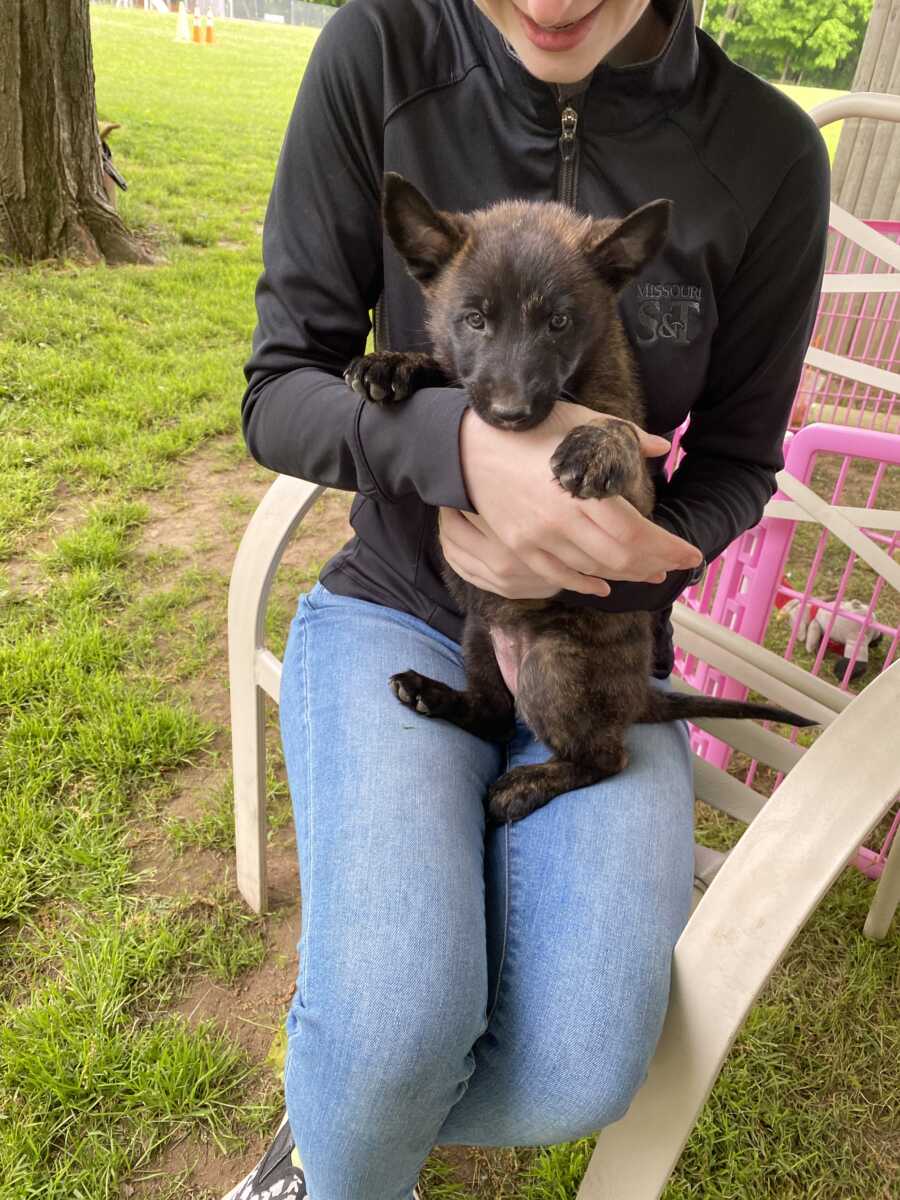
Again, I poured every bit of energy I had into Violet. I took everything that I had learned working with Louise and built on it. We would play on the floor when I didn’t have the energy to stand. We started basic obedience and engagement the day I brought her home and built on it day by day. On my really bad days I still had to take care of her, and I learned to be functional enough so that her needs were met without overexerting myself.
I still couldn’t run; walking for longer than twenty minutes was exhausting, my abdominal pain was debilitating some days, and my weekly migraines still knocked me out. But through all of this, I had a goofy puppy to take care of.
After having Violet for three months, I took her back to her breeder and the trainer that I had gotten to know at Hop River Shepherds for a lesson. I wanted to make sure that she was on track to be a good pet. At this point, they were familiar with my disability and that I was on the list for a service dog. They asked what my prospective service dog would do for me and brought up the idea of training Violet to do those things.
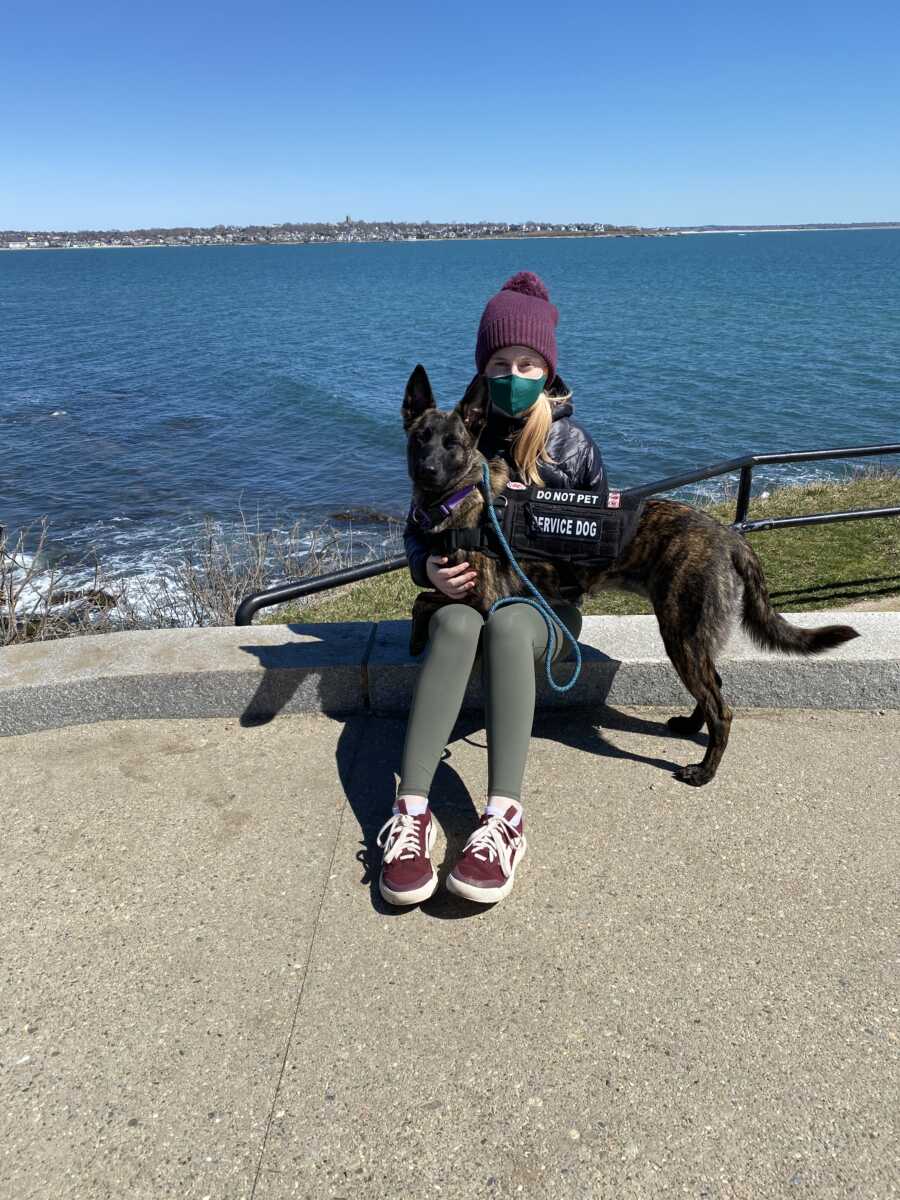
After a lot of consideration, and going back multiple times to talk with them about it, on September 13th I decided to officially start training Violet to be my service dog. After a month she was heeling next to me like a pro. By November I was bringing her everywhere I could as my service dog in training.
By March she was alerting reliably and I took my name off the list for the other dog. Violet was officially my service dog and from that day forward she has not left my side. I wouldn’t have gotten her there without the support of Hop River Shepherds and their willingness to help me train in a way that is safe for me. They know the potential that Violet has, and are helping me have her reach it.
Now it is July 2022, I’m 26 and Violet is 2. My life couldn’t look any more different from where I was 10 years ago, and I couldn’t be happier. Due to Violet’s alerts, I am able to run again, something I haven’t been able to do since I was 15.
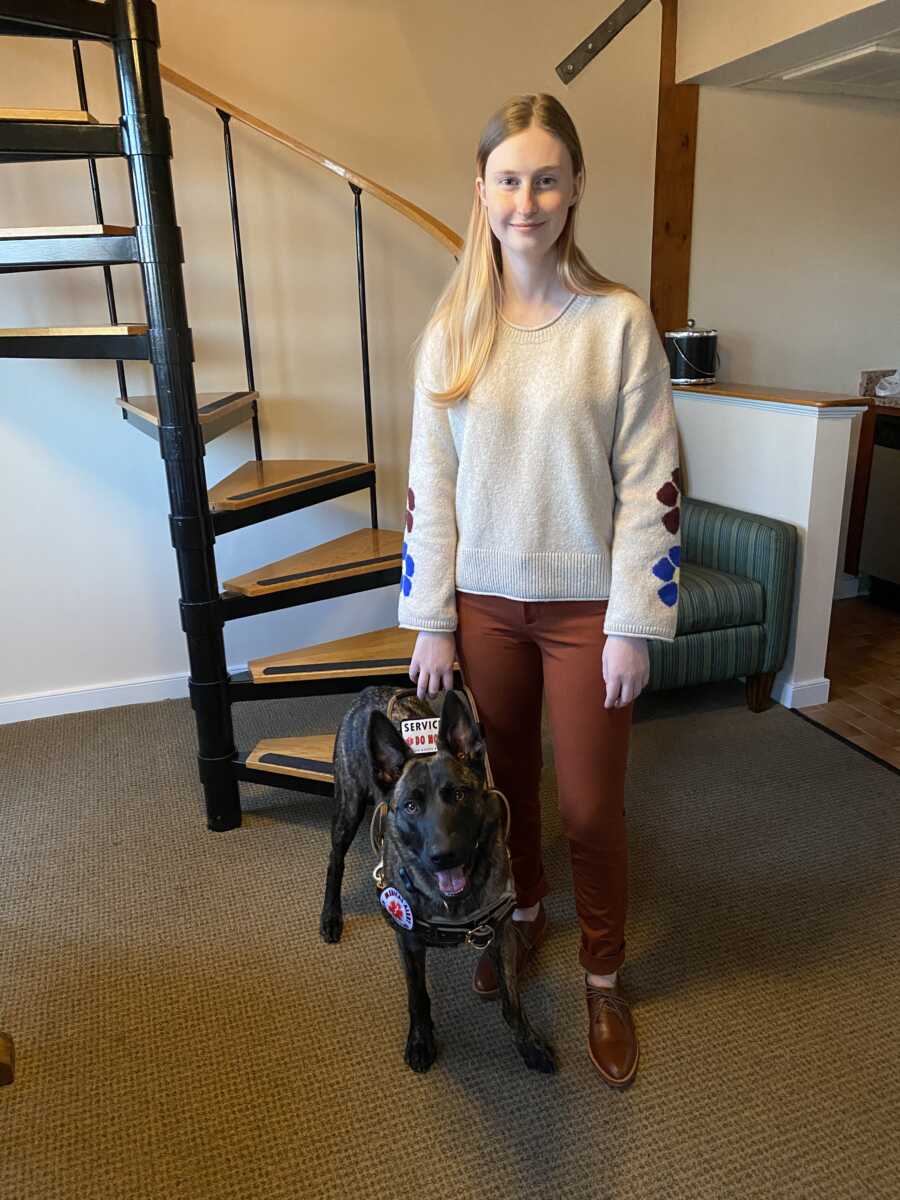
Life With Violet
When I wake up, Violet gets my med bag and a protein shake for me then stays in bed until I am safe to get up. Throughout the day she picks up items that I drop and helps me open and close doors. When I want to go out, she will alert me to my medical episodes and help me find a safe place to sit. Then she will lay across my legs, putting pressure through them to help my episode pass quicker.
After an episode, I am usually very dizzy but with her counterbalance or forward momentum tasks, I am able to walk and still enjoy my time out. When we go out to eat, she tucks under the table and will usually fall asleep, waking up to alert me to a vertigo attack and then go back to sleep. When I am ready to leave she will find the car for me. This all helps me stay out longer. Back at home, I am able to take hot showers again because she will be alert during them. But the biggest blessing is that I don’t have to think about my disability as much.
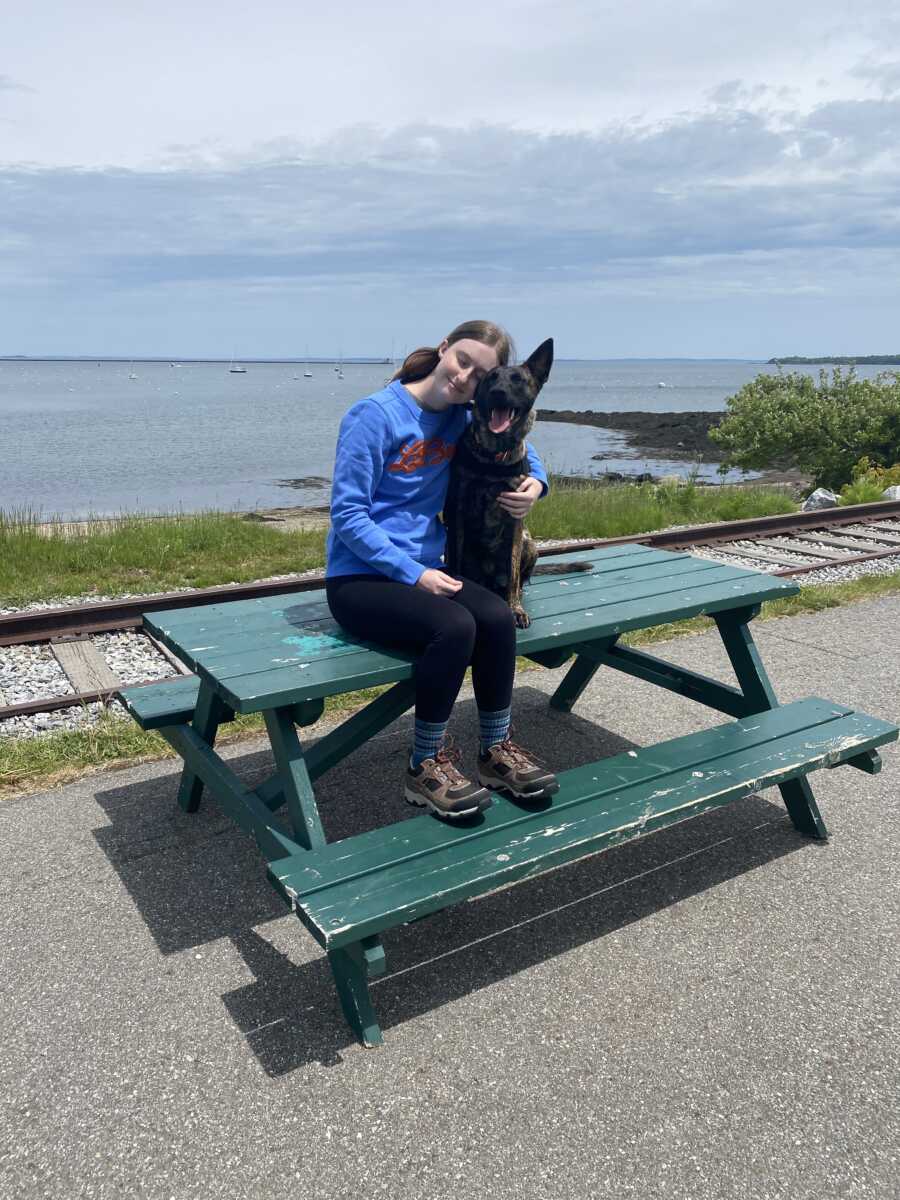
Before Violet, I would constantly have to make sure I hadn’t been standing for too long, if there is a place to sit down nearby, if I was going to have to be walking for much longer, if my vision would go black, if I’d get light-headed or dizzy. You can imagine how exhausting that can get.
But now, all of that is on Violet. I sit when she alerts me; if that isn’t enough, she tells me to lay down and she will stay on me until it is safe for me to get up. She finds chairs for me, she lets me know when I am going to have a vertigo episode when I’m eating. I am no longer dealing with this chronic illness alone. I am able to live the life I want because I have Violet by my side living it with me.
My path to getting a service dog looks a little different than I thought it would when I first applied to a program, but I was right in one aspect, this dog does change my life. I now work for Hop River Shepherds and get to help others with their dogs, a job I never thought I could have done. I am physically at my best. I still have my bad health days and live with constant pain, but Violet and I are a team. A service dog isn’t for everyone, but it was definitely the right choice for me.”
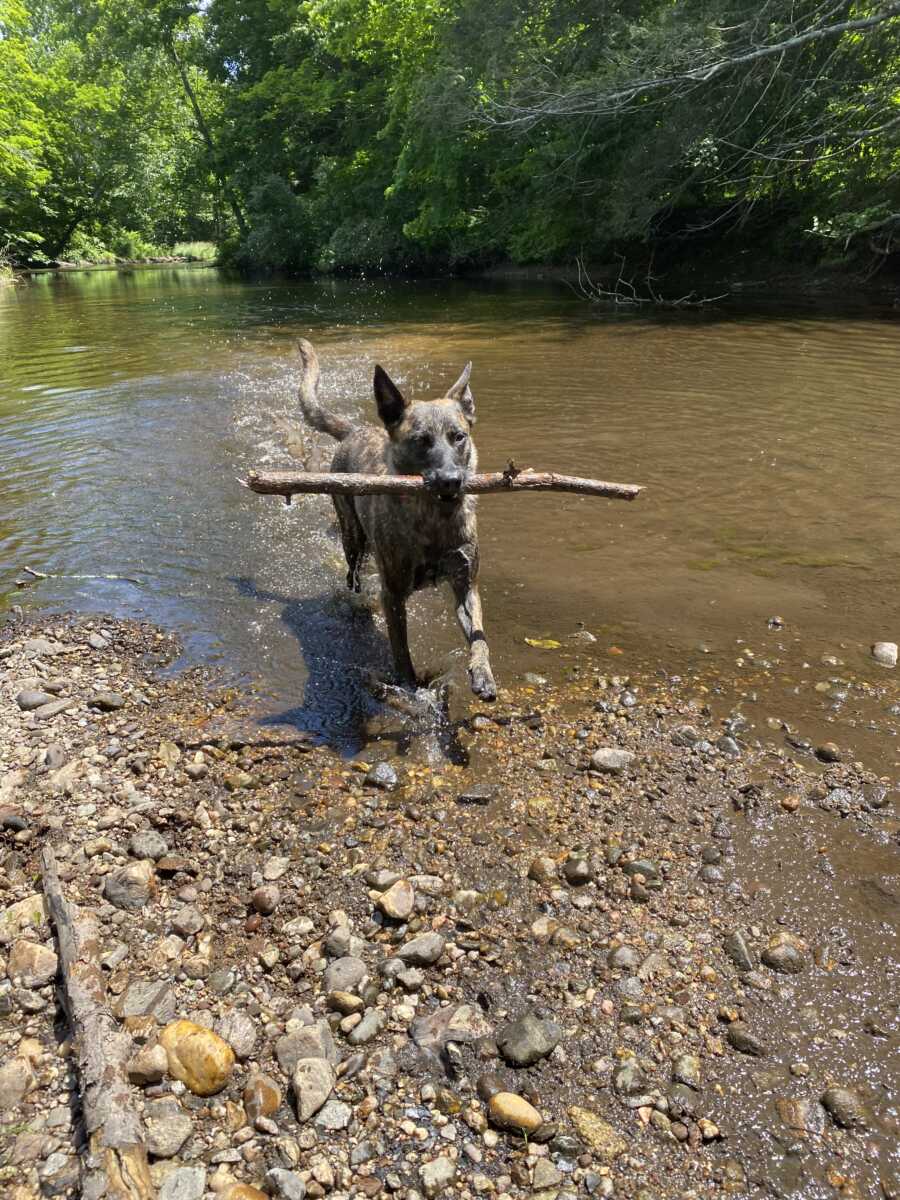
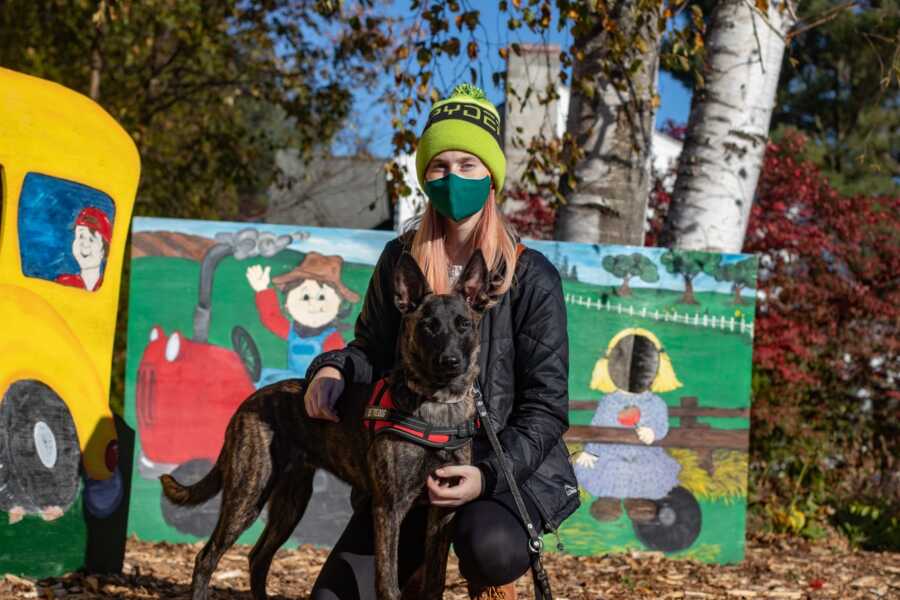
This story was submitted to Love What Matters by Madeleine O’Neill from Connecticut. You can .follow her journey on Instagram. Submit your own story here.
Read more stories like this here:
Do you know someone who could benefit from reading this? SHARE this story on Facebook with family and friends.





